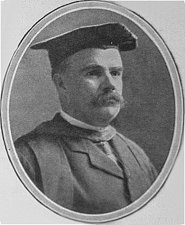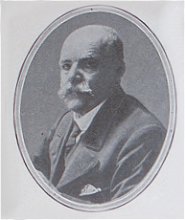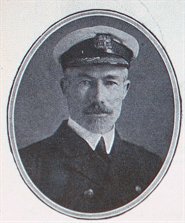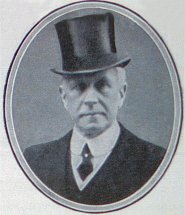British Wreck Commissioner's Inquiry
The British Government quickly followed suit and ordered a formal inquiry into the Loss of the Titanic. On Monday, 22 April, 1912, Sydney Buxton, President of the Board of Trade, requested the Lord Chancellor appoint a Wreck Commissioner to investigate the disaster. To fill the seat of Wreck Commissioner, Lord Chancellor Robert, Earl Loreburn, appointed Charles Bigham, Lord Mersey of Toxteth, President of the Probate, Divorce & Admiralty Division of the High Court.

Charles Bigham
"Lord Mersey"
Illustrated London News
Also appointed to assist Lord Mersey during the proceedings were:
 |
 |
|
Professor J. Harvard Biles
(Chair: Naval Architecture
at Glasgow)
Illustrated London News
|
R. Adm. S.A. Gough-Calthorpe
(Royal Navy: Retired)
Illustrated London News
|
 |
 |
 |
|
Edward C. Chaston
(Senior Engineer Assessor)
Illustrated London News
|
Captain A. W. Clarke
(Trinity [House] Master
in Admiralty Court)
Illustrated London News
|
Cmdr. F.C.A. Lyon
(Royal Navy: Retired)
Illustrated London News
|
All these assessors were experts in the maritime and naval fields, with emphasis in marine construction and architecture.
The hearings were opened in the Wreck Commissioner's Court, Scottish Drill Hall, Buckingham Gate, Westminster, on 2nd May, 1912.
Wreck Commissioners' Court.
Scottish Hall,
Buckingham Gate,
PROCEEDINGS
BEFORE
The Right Hon. LORD MERSEY,
Wreck Commissioner of the United Kingdom,
WITH
Rear Admiral the Hon. S. A. GOUGH-CALTHORPE, C.V.O., R.N.,
Captain A. W. CLARK,
Commander F. C. A. LYON R.N.R.,
Professor J. H. BILES LL.D., D.Sc.,
Mr. E. C. CHASTON, R.N.R.
Acting as Assessors.
ON A FORMAL INVESTIGATION
ORDERED BY THE BOARD OF TRADE INTO THE
LOSS OF THE S. S. "TITANIC."
Over the years the whole Enquiry has been called a ‘whitewash’ but now, you, the reader, will have the chance to decide on whether or not
it was a whitewash. Whatever your conclusions I can assure you it will be a fascinating and very worthwhile read.
In the following pages you can see not only the questions and answers that were given, but you can speculate on the questions that were ‘not asked’
and obviously not answered. Why were these questions not asked? Why were passengers from the lower decks not called upon to give evidence?, etc., etc.
Brian J. Ticehurst,






